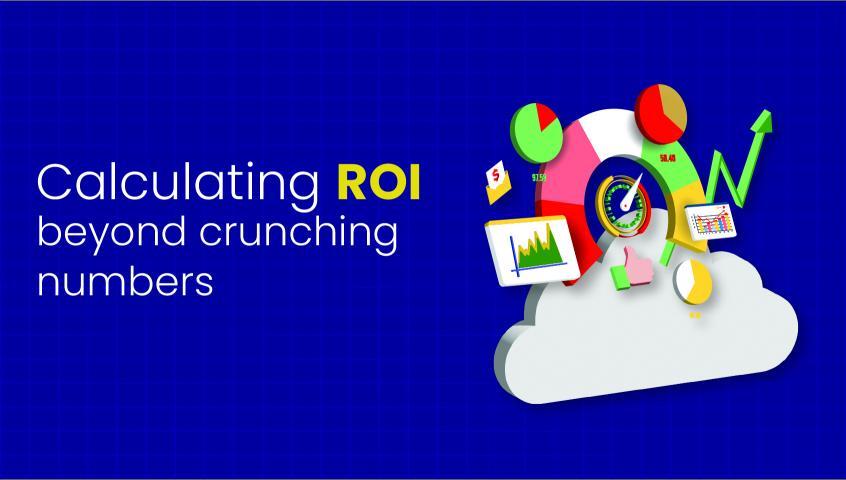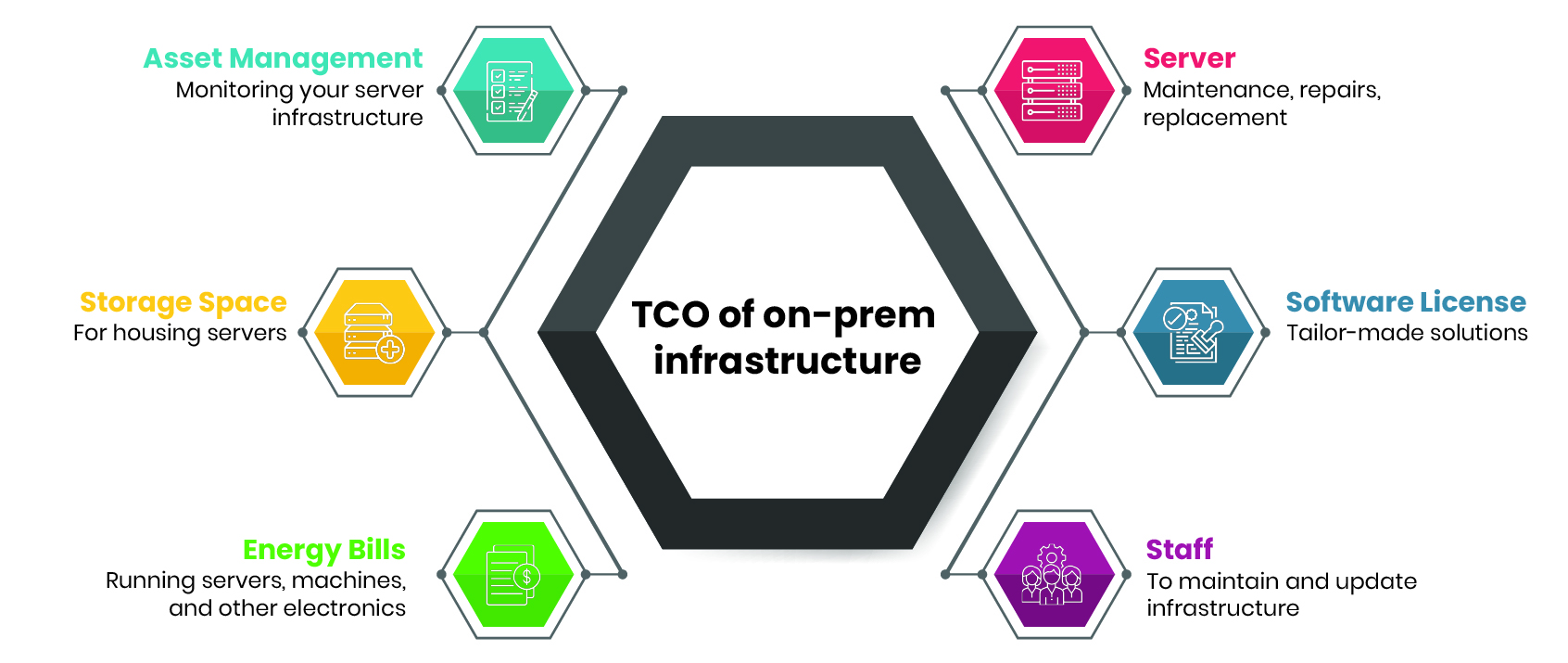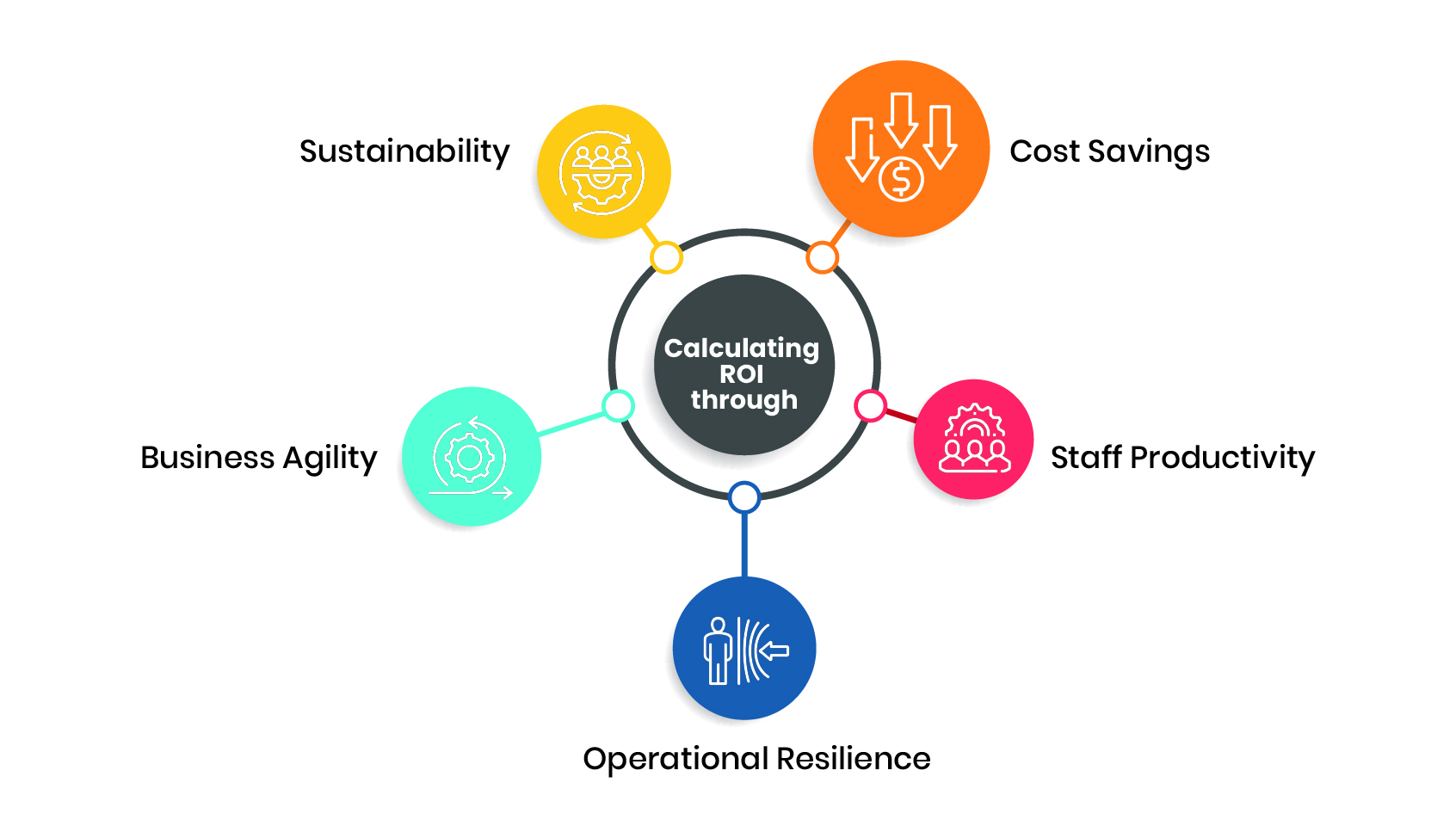
If you are on the fence about cloud migration and planning to present a business case to your board, then calculating cloud ROI can be the factor that influences your decision. Shifting to the cloud is a complex process, which needs us to justify the costs that come with its setup. Along with measuring the risks and intangible benefits, measuring cloud ROI can be a deciding factor for the C-suite, while migrating to the cloud. For those already on the cloud, assessing the ROI is integral to keep a track of your journey. Investigating cloud ROI will help you understand where you’re going right and what needs to be improved.
To create a holistic image of the benefits of the cloud, you’ll need to use a formula to calculate cloud ROI and also see the bigger picture, considering the advantages that are not immediately quantifiable. Let’s start with the former and find out how to mathematically address your cloud ROI.
The ROI equation
Gain from investment - investment
investment
= ROI
The denominator, i.e., the investment will include the total cost of ownership (TCO) that goes into cloud migration. This will include system implementation as an initial cost, but the recurring cost will comprise subscription fees, configuration charges, and training.
While some organizations may initially calculate cloud ROI for a single fiscal year, one must recognize that the cost savings will continue to accumulate over time after the initial investment is paid off. Consequently, the ROI for a cloud project over a period of 3 to 5 years could be substantially higher than the ROI for just one year. Calculating ROI for at least 3 years is imperative to understand the long-term benefits. Also, once migration is done, cloud resources need to be optimized once you gain a better understanding of how the workloads performs in cloud. This creates additional saving opportunities and better price to performance ratio.
Companies who have already shifted to the cloud can testify that the initial stage cloud ROI may be negligible, but the long-term calculation can clearly illustrate the gains from the cloud.
The Importance of Calculating Total Cost of Ownership (TCO)
If you are hoping to calculate Cloud ROI to figure out how much migrating to the cloud will cost you, the first step is measuring the costs of your current on-premises infrastructure. This will include:

Calculating the TCO of your on-premise infrastructure will help you understand how you can benefit by moving to the cloud.
While assessing the investment for the cloud, i.e. TCO, you will need to add all the costs associated with the adoption, operation, and maintenance of the cloud.
- Migration costs: Apart from the expenses directly associated with moving to the cloud, the shift to cloud computing entails significant changes in both the structure of IT and the personnel operating it. Enterprises might face interruption to their business continuity, as well as expenses linked to change management, integration, and the mismatch among different solutions, but only for a short while and is usually accompanied by a Risk Mitigation Plan. There are different methods of moving to the cloud and each one has different costs associated with it.One must also add the ongoing costs to maintain the on-premise environments and cloud environments till migration is done.
As an AWS, Microsoft, and Google(GCP) Cloud Partner, Qentelli can help you with migration assessment and work with your cloud provider to optimize costs that are tied to migration. - Ongoing costs: There are evident benefits of moving to the cloud, but an organization encounters two expenses as well: the operational costs associated with the Cloud platform and with Cloud databases. The good thing is they depend on your needs, you can pay-as-you-go. Your monthly cloud cost would be variable, based on the services you use and your workloads. The cloud bill would be influenced by the type of service you consume, like computing or storage. The second factor is your cloud consumption model, which could be on-demand or a savings plan. Hybrid is also an option.
- Skill acquisition: The cost of training the staff should also be accounted for when calculating cloud ROI. You will need to employ consultants who guide your team on how to maximize the use of the cloud.
‘Learn about Qentelli’s Cloud Capabilities’ 
Intangible Value of the Cloud: key factors that affect ROI
Just like for most of the technological adoptions, Cloud’s benefits are also split between quantitative and qualitative values. While the former can be measured in ROI and TCO, the latter needs a big-picture vision to strategize. Some of the intangible benefits of the cloud are:
- Downtime: Hardware servers are prone to downtime; this issue is significantly handled by migrating to the cloud. The cloud allows you to adjust according to the need of the hour, giving you the right resources at the right time, which leads to a steep fall in downtime.
- Agility: The ability to quickly adapt to changes in the business environment is referred to as agility. Cloud computing enables businesses to substantially reduce the time required to scale IT infrastructure, accelerating the completion of projects that lead to the growth of revenue. A cloud-native enterprise can quickly access the required assets, configure software, test it, and then take it to market. The speed also opens up avenues of innovation.
- Pay for what you use: In basic models, a one-stop budget is created which is rarely revised. One cannot modify the resources, which often causes wastage. Cloud solves over or underutilization of resources by automating the process, saving on unnecessary costs.
- Productivity: The cloud creates a space conducive to smooth collaborative work where change is easily created and accepted. The ability to access resources from any browser creates a more productive environment, translating into better business outcomes. Also, the team’s focus shifts from performing support tasks to fostering innovation.
- Quality: Through customization and higher user relevance, the cloud can enhance the quality of your product. Automation is a significant advantage of the cloud. It allows for the automation of deployments and rollbacks. You can ship and test features more frequently - up to several times per day. This is especially important because it fosters a culture of continuous improvement, thereby improving your product and the experience of your customers.

A new paradigm is emerging, one that concentrates on speed, eligibility, and elasticity. Cloud is the perfect partner for this cultural shift. As the cloud smooths operations, it enables teams to refocus their time and energy into revenue generation and value creation. These aspects of the cloud aren’t visible in the numerical cloud ROI but form a significant part of it that needs to be recognized. Hence, to see a comprehensive image of the value of the cloud, one needs to go beyond crunching numbers and understand the intricacies that will result in a positive economic impact.
Qentelli has helped organizations immerse into the cloud by overcoming unforeseen challenges which have been translated into revenue gain. If you would also like to talk about cloud migration, drop us an email at info@qentelli.com.

